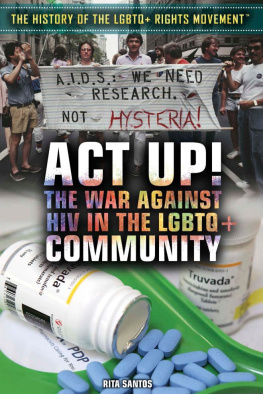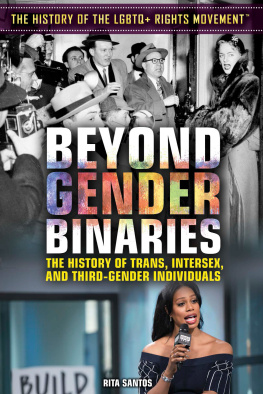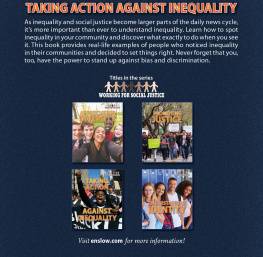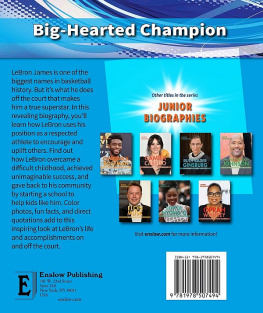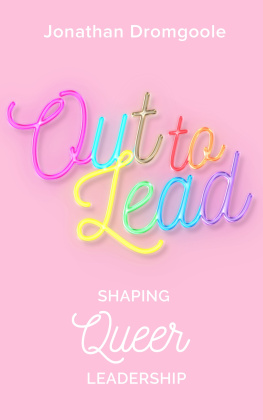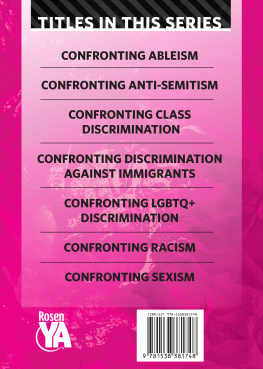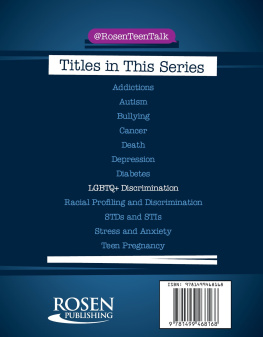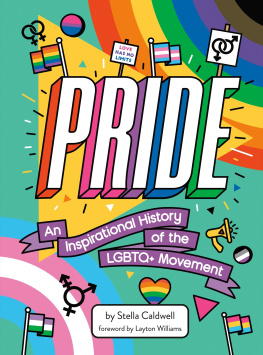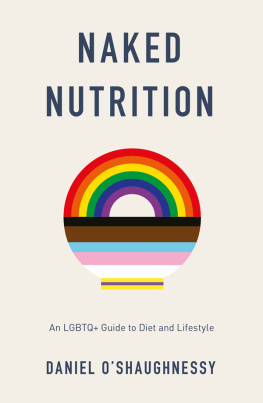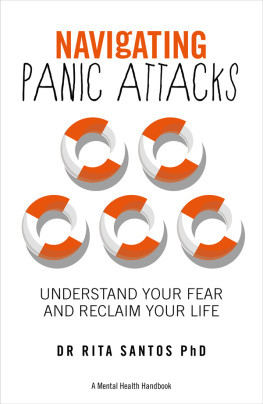Rita Santos - Act Up!: The War Against HIV in the LGBTQ+ Community
Here you can read online Rita Santos - Act Up!: The War Against HIV in the LGBTQ+ Community full text of the book (entire story) in english for free. Download pdf and epub, get meaning, cover and reviews about this ebook. year: 2018, publisher: RosenGroup, genre: Romance novel. Description of the work, (preface) as well as reviews are available. Best literature library LitArk.com created for fans of good reading and offers a wide selection of genres:
Romance novel
Science fiction
Adventure
Detective
Science
History
Home and family
Prose
Art
Politics
Computer
Non-fiction
Religion
Business
Children
Humor
Choose a favorite category and find really read worthwhile books. Enjoy immersion in the world of imagination, feel the emotions of the characters or learn something new for yourself, make an fascinating discovery.
- Book:Act Up!: The War Against HIV in the LGBTQ+ Community
- Author:
- Publisher:RosenGroup
- Genre:
- Year:2018
- Rating:4 / 5
- Favourites:Add to favourites
- Your mark:
- 80
- 1
- 2
- 3
- 4
- 5
Act Up!: The War Against HIV in the LGBTQ+ Community: summary, description and annotation
We offer to read an annotation, description, summary or preface (depends on what the author of the book "Act Up!: The War Against HIV in the LGBTQ+ Community" wrote himself). If you haven't found the necessary information about the book — write in the comments, we will try to find it.
Act Up!: The War Against HIV in the LGBTQ+ Community — read online for free the complete book (whole text) full work
Below is the text of the book, divided by pages. System saving the place of the last page read, allows you to conveniently read the book "Act Up!: The War Against HIV in the LGBTQ+ Community" online for free, without having to search again every time where you left off. Put a bookmark, and you can go to the page where you finished reading at any time.
Font size:
Interval:
Bookmark:



Published in 2019 by The Rosen Publishing Group, Inc.
29 East 21st Street, New York, NY 10010
Copyright 2019 by The Rosen Publishing Group, Inc.
First Edition
All rights reserved. No part of this book may be reproduced in any form without permission in writing from the publisher, except by a reviewer.
Expert reviewer : Joey Lopez, director of outreach and health services, Ali Forney Center
Library of Congress Cataloging-in-Publication Data
Names: Santos, Rita, 1985- author.
Title: Act up! : the war against HIV in the LGBTQ+ community / Rita Santos.
Description: New York : Rosen Publishing, 2019. | Series: The history of the LGBTQ+ rights movement | Includes bibliographical references and index. | Audience: Grades 7-12.
Identifiers: LCCN 2017018718 | ISBN 9781538381243 (library bound) | 9781508183068 (pbk.)
Subjects: LCSH: AIDS (Disease)United StatesPrevention Juvenile literature. | AIDS (Disease)Political aspectsUnited StatesJuvenile literature. | AIDS (Disease)PatientsUnited StatesJuvenile literature. | AIDS activistsUnited States Juvenile literature. | GaysPolitical activityUnited StatesJuvenile literature.
Classification: LCC RA643.83 .S26 2018 | DDC 362.19697/92dc23
LC record available at https://lccn.loc.gov/2017018718
Manufactured in the United States of America
On the cover: Advocates for AIDS and HIV research like these marchers in a June 1983 Gay Pride parade ( top ) helped pave the way for lifesaving antiretroviral drugs like Truvada ( bottom ).
CHAPTER ONE
A NEW CONSERVATIVE AGENDA
CHAPTER TWO
THE SEARCH FOR ANSWERS
CHAPTER THREE
AIDS AND THE FIGHT AGAINST STIGMA
CHAPTER FOUR
DEALING WITH IT ALONE
CHAPTER FIVE
CHANGING THE FACE OF AIDS
CHAPTER SIX
EDUCATION AND MEDICATION
CHAPTER SEVEN
THE FUTURE OF AIDS
w hen people think of plagues, they tend to imagine a time much more primitive than our own, before the discovery of vaccines or antibiotics. However, in the 1980s, a plague came to the United States in the form of a little-understood virus, one that would later come to be named the human immunodeficiency virus (HIV). This virus specifically targets the immune system, the system in our bodies that protects against disease. Specifically, HIV attacks a part of the immune system known as CD4 cells (or T cells). As the virus destroys more and more T cells, it becomes harder for a person to fight off infection. When the immune system is so compromised that it can no longer fight off disease, HIV is considered to have progressed to a later stage known as acquired immune deficiency syndrome (AIDS). Once a person has AIDS, their life expectancy is generally no longer than three years. However, there is hope. Medical advances since the identification of HIV have prevented many cases from advancing to AIDS.
Scientists believe that HIV is a mutation of a virus found in chimpanzees in central Africa called the simian immunodeficiency virus (SIV). It is believed that hunters became exposed to chimpanzees infected blood and that SIV later mutated into HIV.
As is often the case with viral infections, there are multiple strains of HIV. The two major types are HIV-1 and HIV-2. This history examines how HIV-1, henceforth called simply HIV, spread as well as the destruction it left behind.
The earliest documented case of an HIV infection was that of a man in Kinshasa, now the capital of the Democratic Republic of the Congo, in 1959. The virus spread from the Congo to other areas of Africa, eventually reaching the United States and other Western nations. That being said, HIVs long incubation period meant that many of those infected with the virus in the earliest years of its outbreak would not show any symptoms until the early 1980s. This would be the start of the AIDS pandemic.
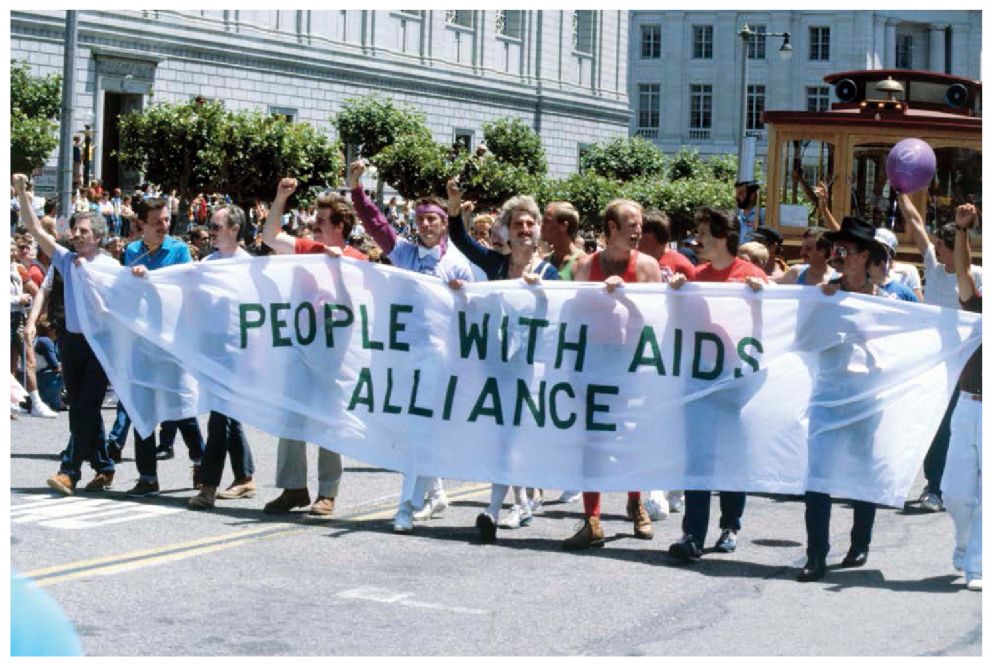
Since the outset of the AIDS pandemic, those affected by itsuch as these marchers in the 1983 San Francisco Gay Pride Paradehad to fight for recognition, respect, and adequate medical care.
AIDS is a devastating disease, but a combination of a slow response from the US government, poor funding, and prejudice against the most affected populations turned what could have been a small tragedy into a widespread crisis. One major factor in societys lulled response to the outbreak of HIV/AIDS is that the primary affected populations in its earliest years were members of the LGBTQ+ community. A combination of apathy and prejudice turned AIDS into a pandemic. Millions died because of those who refused to help or acknowledge the scope of the problem.
A look at primary and secondary historical sources tells the tale of how the HIV/AIDS epidemic unfolded. The minutes from government meetings, reports from the Centers for Disease Control and Preventions (CDC) and the World Health Organization (WHO), and interviews with HIV-positive patients and activists give the most accurate information to one studying these events. Activists were careful to document the crisis and research the effects of new medicines and courses of treatment. Although HIV/AIDS was a horrific tragedy for the LGBTQ+ community, from it rose one of the most accomplished and effective civil rights movements in US history.

A fter the growth of the gay rights movement in the 1960s, the LGBTQ+ community had been making slow progress toward civil rights. However, that progress would come to a halt with the election of Republican presidential candidate Ronald Reagan in 1980. Segments of his party held very conservative social views, including intolerance toward sexual minorities. Gay rights activists knew their communities would have a hard time after Reagans victory. No one could have predicted the AIDS epidemic, though. The intolerance and indifference that came from the government in the wake of this outbreak needlessly allowed things to become much worse than they needed to.
A decade before the AIDS crisis plagued the United States, the nation was dealing with an epidemic of a different kind. Between 1969 and 1974, the National Institute on Drug Abuse estimated a rise in the number of heroin addicts from 242,000 to 558,000. In 1986, the New York Times estimated that there were 500,000 heroin addicts in the United States, with two hundred thousand of them in New York City.
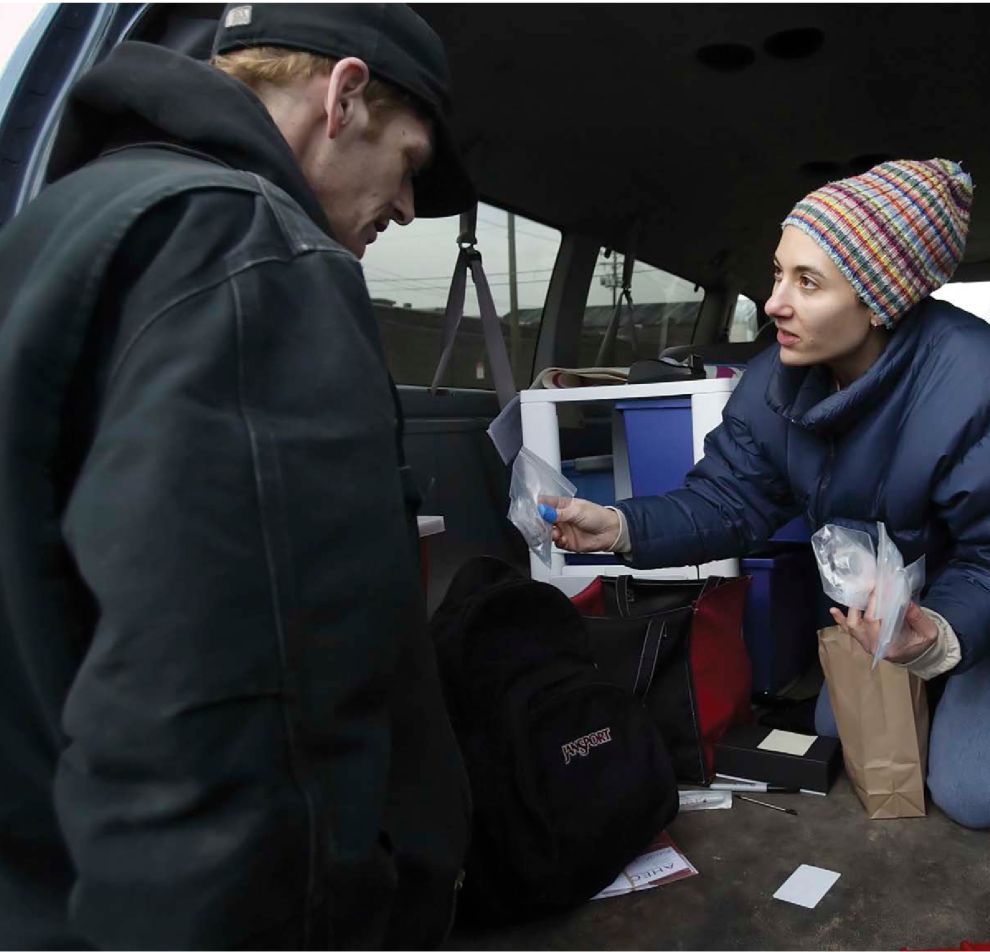
One common way HIV is transmitted is by sharing a needle with an infected person. Today, programs that exchange intravenous drug users used needles for clean ones help prevent the spread of HIV and other diseases.
Many states attempted to discourage heroin use by passing laws making it illegal to own drug paraphernalia. These are objects used primarily for drug use. This law made it more difficult to acquire needles to inject heroin, causing drug users to often share the few needles they had. Sharing unsterilized needles was a perfect way to spread all kinds of infections. Doctors had already seen an epidemic of hepatitis B in injection drug users (IDUs).
Font size:
Interval:
Bookmark:
Similar books «Act Up!: The War Against HIV in the LGBTQ+ Community»
Look at similar books to Act Up!: The War Against HIV in the LGBTQ+ Community. We have selected literature similar in name and meaning in the hope of providing readers with more options to find new, interesting, not yet read works.
Discussion, reviews of the book Act Up!: The War Against HIV in the LGBTQ+ Community and just readers' own opinions. Leave your comments, write what you think about the work, its meaning or the main characters. Specify what exactly you liked and what you didn't like, and why you think so.

